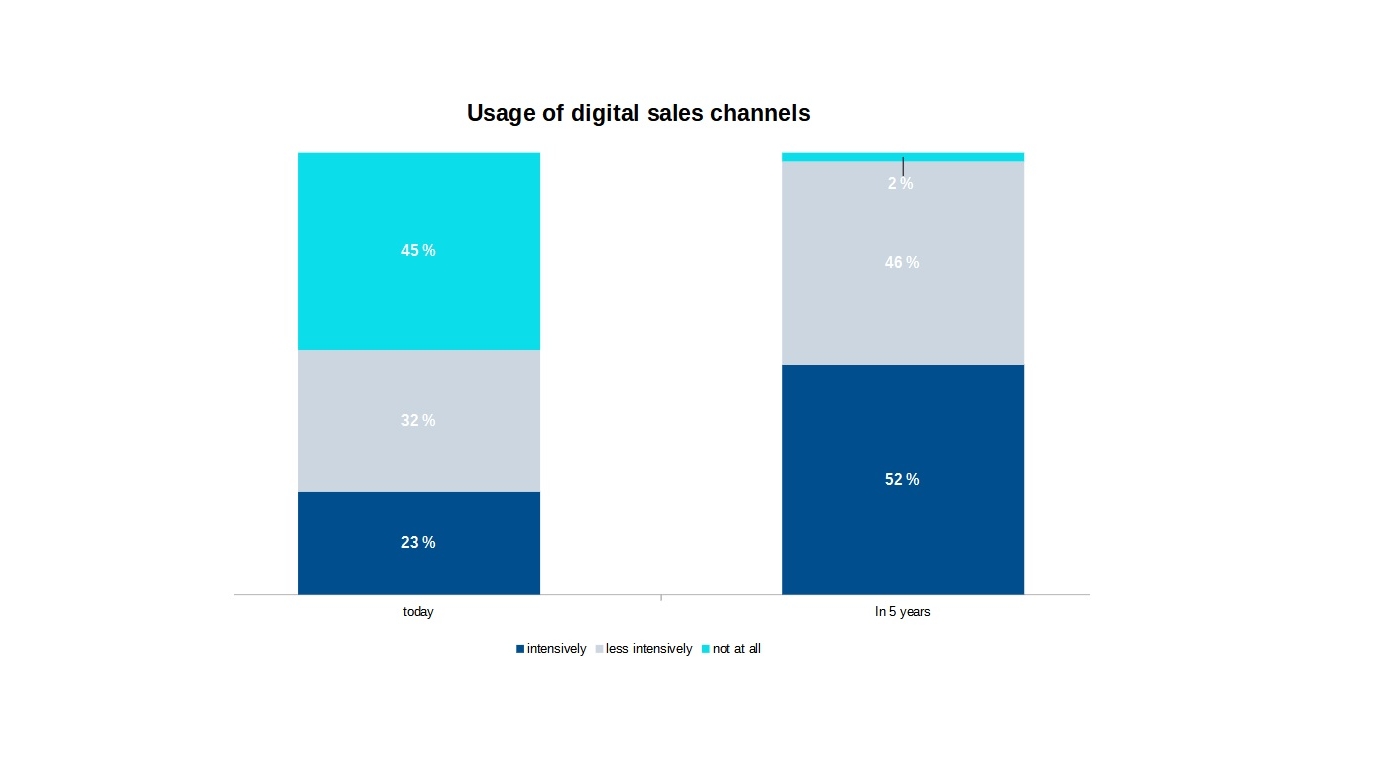
Parallel Worlds
It all started on a cold, gray and rainy winter's day in an otherwise normal November. The clouds are hanging low, it's raining and it's won't stop for days. Our protagonist is struggling through the rush-hour to work, as he does every day. He is an ordinary employee in a renowned company in the financial sector in a well-known American city. A small wheel in the endless gears of the financial industry. Nevertheless, he is doing quite well - a degree in the information sector, a secure, well-paid job, a wife and child, and regular working hours make for a life worth living. One day in the early 90s, he was inspired by a ingenious idea that would turn his life around. His idea is to sell products via the internet.
Early 90s - Windows NT is running on the computers, Bill Clinton is the current US president, IBM has announced a loss of almost 5 billion USD in the previous year, Kurt Cobain dies and The Lion King was realeased to the cinemas - a picture from the beginnings of the global spread of the Internet. The few who have had contact with the Internet dial up via a simple 56k modem, the AOL window pops up and you hear beeps, pops and static sounds. The Internet is slow, expensive, and hardly used - and not just because it's billed by the minute. This internet thing isn't catching on anyway.
In this environment, he wants to sell his products - an almost insane undertaking. Who should even see his products, let alone buy them? Payment over the Internet is still years away from PayPal and instant bank transfers. He is programming his own online store to market his products. To his competitors, everything points to being a big washout. Fellow campaigners laugh at his idea, make fun of him and don't take him seriously. He will never be able to reach the right group of customers via the internet, address them, and then convince them to buy his products.
He is still unknown, has hardly any reach, and supposedly cannot pevail over the giants of the industry. These supposedly have much more experience, employees, reach, resume, budget, etc. pp. But they're lacking an important point: an innovative view on long-term decisions for their own company. The consistent urge to innovate, to improve, to question standardized processes and methods, and to change them if necessary. It takes courage to go against the grain. And this courage led to our protagonist selling his first product online only a short time after founding the company. Contrary to expectations, it was not even a product intended for the masses. It was a book in a scientific field about modeling thinking concepts and transferring them into computer mechanisms. A niche product, a single book to a single customer.
But word is spreading. Ordering products online - not in a store, not by phone, and not by fax. A novelty that quickly attracts other customers. More books are sold, first in the initial state and then to all 50 states of America - in the first year! And even at this point, he was ridiculed by the industry giants. They ignored his success and failed to see the nitty-gritty - that customer focus and a much-needed innovation of outdated sales channels are essential to long-term commercial success.
The online store is growing constantly and more books are being sold than ever before. He manages to become a new industry giant by cleverly swallowing up competitors who previously smiled tiredly at him. Online access meant that all customers had access to the product range at all times, without permanently present sales departments. There was no need to answer follow-up questions, clarify packaging and shipping, calculate or research prices. The customer sees, the customer informs himself, the customer buys. These saved resources together with an incredible interest by the public enabled investments elsewhere. New warehouses were built at various locations, increasing reach while reducing shipping times and costs. Always having an eye on long-term and future-oriented solutions.
The idea and his online store spread like a wildfire. Every realized profit is invested, always with an eye on how to operate in the long run. Soon, not only books are sold, but simply everything. It is not only sold statewide but globally. He proved to exceptionally good insights for long-term decisions in the early days of the Internet.
Maybe by now you've guessed who our person is. Today, he is the world's richest man, and with his innovative drive and constant development, he has not only conquered the online market, but earned a monopoly position. Our protagonist is Jeff Bezos from Amazon.
We're now coming to the turning point of our story. Exchange books for steel. You'll find that many parallels can be drawn, putting history in a different perspective. Because your steel can and will be sold online in the future. You, and you only, are on the threshold of making future-oriented decisions today. You go your own way and make the decisions that propel your company. Your success is not dependent on others but on the decisions you make today.
Not only to stay competitive but to outpace your competition by miles. That's the goal you can have in mind with online steel marketing. Ask yourself how steel will be sold and traded in 5, 10, 30 years. If fax, consultation and local purchasing were obsolete 30 years ago, the future will not look brighter for these channels. Skeptics are everywhere, but they will be left behind in the digital transformation process. They are not taking advantage of the opportunities that are literally right in front of their face.
Dr. Heinz-Jürgen Büchner, Managing Director of IKB Deutsche Industriebank Frankfurt, also states in his presentation "Economic developments and their impact on the steel markets" that times are changing: "The digitization of the steel trade is only at the beginning of a dynamic development. [...] As in other trading segments, customers are likely to be the ones ultimately driving the trend towards digialization." And the customers in 2020 and in the future will be those who purchase their products, services and trade goods online.

Based on this table, the development of digital sales channels within the next 5 years can be predicted to some extent. A trend reversal can be seen there. Customers who do not use digital options at all (46%) will become customers who use digital channels very intensively to less intensively! Only a group of 2% will reject digital sales channels in the future. This results in new requirements for digital distribution channels from the steel distributor to the end customer.
At the end of this blog entry, I would like to highligt two quotes that illustrate these new requirements and put forth the focus on the customer and his requirements.
"Change before you have to." - Jack Welch, Manager, CEO General Electric
"If you want to take a look at the future, you should first take a look at the past." - Frank Romweber, CEO omnoto
These statements make two things forcefully clear. Change is inevitable and will come, and it is necessary to recognize parallels from the past to avoid them in the future. To learn from mistakes but also adapt to success stories are vital virtues to strive for. The aim is to plan on the long-term, take advantage of opportunities offered by digital sales channels in the steel trade, and offer the best and latest options for your customers.
Credits:
Header by Jason Leung on unsplash
Graphic inspired by Dr. Heinz-Jürgen's talk "Economic developments and their impact on steel markets"
New blog posts
Discover our new Scrum Master services!
Effective immediately, we are offering professional Scrum Master services to ensure smoother digitalization processes.
Read more →
Business objective rather than cost factor
IT projects in steel trading are a hot topic for steel traders and steel suppliers. Projects such as having your own onl...
Read more →
Funding support for steel traders in Rhineland-Palatinate
The ISB's DigiBoost funding program supports companies in Rhineland-Palatinate in their efforts to pursue investments in...
Read more →
Break new grounds with your own online steelshop
In this article, you can find out what advantages your own steel store can offer and what problems steel traders are cur...
Read more →
EDE and omnoto accompany retail partners on their way into the future
Steel traders in Germany are in the midst of digital change. An apparent fact is that this change is also advancing stea...
Read more →
New! Guided omnoto steel store tour
Time is money - that's why we thought about how to give you a quick overview of the omnoto webshop. The result is a guid...
Read more →


